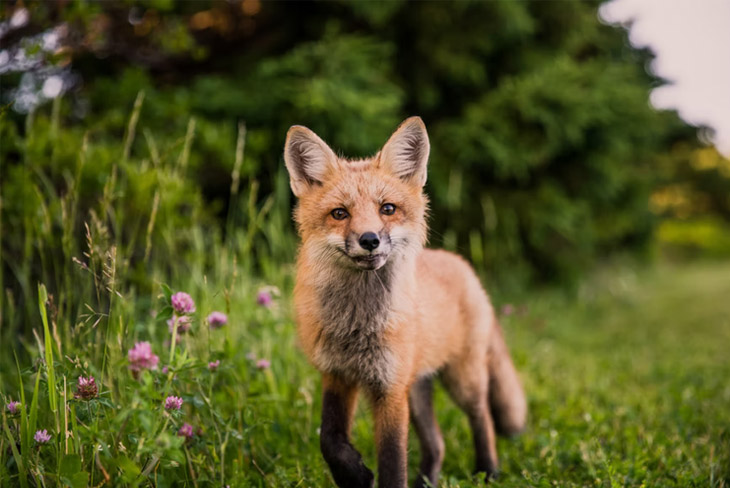6 ways you can support wildlife conservation efforts

Amid the slew of bad news, a kindling of hope appears: China says that giant pandas are no longer considered an endangered species. Hurray!
The black and white bear has served as Panda7’s namesake, in part due to our love of nature, their amicable nature, and the fact that they don’t hibernate (just like us – we’re available 24/7.) We love them, and we know that a lot of you do as well. Unfortunately, while giant pandas are no longer on the endangered list, they are still considered vulnerable. So how do we help them and other endangered species? What can we do to support wildlife? Panda7 has some tips on how you can help to support wildlife conservation efforts. Some of these can be done “hands-on” – where others you can do from behind a computer screen. Read on for six of our tips on how to support wildlife conservation.
#1. Educate yourself
When it comes to supporting wildlife conversation efforts, the best thing you can do is to inform yourself on what the practice is, how it occurs, and why it is so important. Educational content can range anywhere from short informational pieces to documentaries. Learning about what are invasive species – both plant and animal – can help educate you on how to stop their growth and spreading. You may also learn about which species are beneficial to your garden and around your own home during the process, which can support you in living harmoniously among them.
#2. Control your own domestic pets.
As fun as it is to let our dogs run free, there are multiple reasons why certain areas have leash laws. For one, some areas may be multi-use, and having off-leash dogs can pose a risk to bikers, families with small children, and other path-users, but another reason is that some areas contain wildlife conservation where domesticated animals – specifically dogs – can cause havoc by tromping through. Domesticated cats should also be kept indoors, especially as they may kill vulnerable bird or small prey species and impact the food chain.
#3. Reduce, reuse, and recycle.
Reusing and recycling, especially plastic products, can help to “give back” a little of our own. The less plastic there is in the environment, the less opportunity there is for animals to ingest harmful substance or choke on bags, bottles, and other hazardous materials. You may also wish to avoid products that only have disposable plastic options as well. Choose reusable when you can and be mindful of what you are consuming – product-wise, and how it is transported.
#4. Adapt a more plant-based diet.
OK – you don’t have to go 100% vegan but choosing to swap out meat where possible can be hugely beneficial to your efforts for reducing your carbon footprint and helping support wildlife conservation efforts. Meat consumes land when we use up land to feed and raise livestock. It also uses a large amount of water. The less demand there is for meat, the less green space we will need to eat up just to raise and grow our meat products. There are plenty of resources online for how to healthily (or unhealthily, depending on your preference) reduce your meat and dairy consumption.
#5. Be ecologically responsible when travelling.

Travelling is something we likely all want to do at some point – but unfortunately it can be hard on the environment. If we choose to fly or take a cruise, we are contributing to carbon gas emissions. It’s impossible to suggest folk stop travelling – especially as there are so many benefits to travelling for our own personal development – but we can certainly recommend that travellers try to be more ecologically responsible while in a foreign country. Consider bringing your own reusable utensils, abide by waste laws, and don’t litter. If you are eating out a lot, note that you can always take any food you don’t finish as takeaway so that you don’t contribute to excess food waste! Finally, be mindful of wildlife conservation areas while travelling and doing hikes. Many trails will have regulations – such as where you can and cannot step – so try to be mindful of these to do your part.
#6. Use public transport more.
Not only does travelling more by car have the potential to increase our car insurance rates (premiums may be impacted by our annual mileage), but it may also reduce your carbon footprint significantly. Opt for public transport, bike, or walk where possible. Having a car is great and convenient, but they continue to contribute to greenhouse gases and pollute our environment. It’s OK to drive when all else fails – but if you can, get a bus pass!
Bonus: Get a quote with Panda7.
Did you know Panda7 has jumped in on the wildlife conservation effort as well? We believe that planting trees is the way to go – so much so that we are offering our happy clients the opportunity to help us plant a single tree for every quote received and three for every policy purchased. Trees offer homes for small critters, protect our ecosystems, filter our air and water, and shade us from the sun. Want to be a part of our conservation effort? Click below to see more information.

